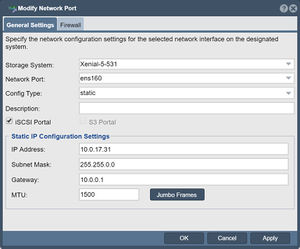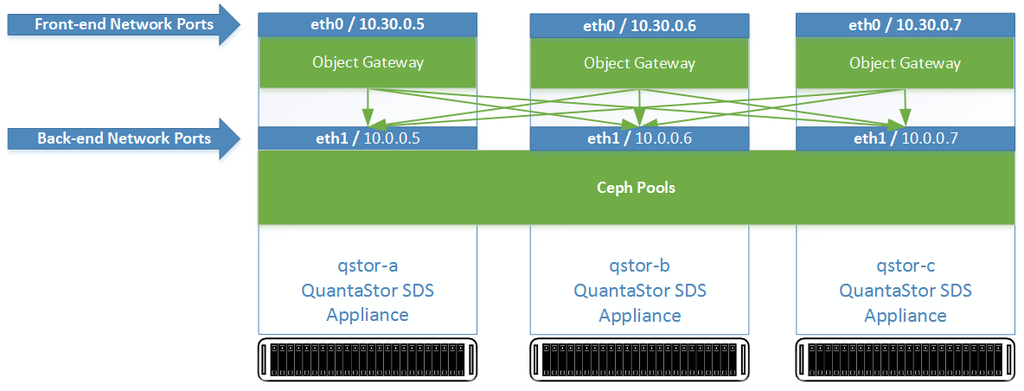Template:CephNetworkConfiguration
Front-end / Back-end Network Configuration
Networking for scale-out file and block storage deployments use a separate front-end and back-end network to cleanly separate the client communication to the front-end network ports (S3/SWIFT, iSCSI/RBD) from the inter-node communication on the back-end. This not only boosts performance, it increases the fault-tolerance, reliability and maintainability of the Ceph cluster. For all nodes one or more ports should be designated as the front-end ports and assigned appropriate IP addresses and subnets to enable client access. One can have multiple physical, virtual IPs, and VLANs used on the front-end network to enable a variety of clients to access the storage. The back-end network ports should all be physical ports but it is not required. A basic configuration looks like this:
Configuring Network Ports

Update the configuration of each network port using the Modify Network Port dialog to put it on either the front-end network or the back-end network. The port names should be consistently configured across all system nodes such that all ethN ports are assigned IPs on the front-end or the back-end network but not a mix of both.
Enabling Object Storage Gateway Access
When the Object Portal checkbox is selected the port is now usable to access the QuantaStor web UI interface as it redirects port 80/443 traffic to the object storage daemon. Note, this will disable port 80/443 access to the QuantaStor Web Manager on the network ports where you Object Gateways are deployed. Note, you may use other network connections or HTTPS for web management access and the default alternate access port for the QuantaStor web management interface is port 8080.
